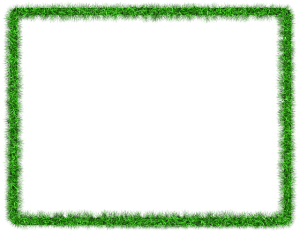Mulching is a crucial practice in lawn care and landscaping that offers multiple benefits. By applying organic materials like grass clippings or wood chips, you protect soil, retain moisture, suppress weeds, prevent erosion, insulate roots, and enrich soil over time. These advantages lead to healthier grass and enhanced landscape aesthetics. Mulching is an effective way to elevate your lawn care routine and create a vibrant, lush outdoor space while reducing the need for chemical herbicides. The choice between organic (enriching soil) and inorganic (durable, reflecting heat) mulches depends on specific landscaping needs.
Maintaining a lush, well-defined lawn is crucial for any landscaping effort. This guide explores mulching and edging – two vital practices in lawn care. Discover how mulching nourishes your lawn and suppresses weeds while retaining moisture, and choose from organic (wood chips, compost) or inorganic (rock, rubber) options. Edging ensures neat boundaries, preventing grass from encroaching on sidewalks. Explore tools like string trimmers and manual edgers. Integrate these practices sequentially for optimal results: edge first to neaten up boundaries, then mulch to enhance soil health. Adjust techniques seasonally for spring, summer, fall, and winter lawn care.
- Mulching: Nurturing Your Lawn and Beyond
- – Benefits of mulching: Improved soil health, weed suppression, moisture retention, aesthetic appeal
- – Types of mulch: Organic (wood chips, straw, compost) vs. inorganic (rock, rubber)
Mulching: Nurturing Your Lawn and Beyond

Mulching is not just about improving the aesthetics of your lawn; it’s a crucial aspect of effective lawn care and landscaping. By leaving organic material like grass clippings or wood chips on the ground, mulch acts as a protective layer that nourishes the lawn and soil below. It helps retain moisture, reducing the need for frequent watering, which is particularly beneficial during dry spells. Additionally, it suppresses weed growth by blocking sunlight from reaching weed seeds, thus creating a healthier environment for your desired grass and flowers.
Beyond its practical benefits, mulching contributes to the overall health and beauty of your landscape. It prevents soil erosion, keeps roots insulated in extreme temperatures, and adds nutrients to the soil as it decomposes. When done correctly, mulching can enhance the visual appeal of your lawn by creating uniform edges and a manicured look. As a result, it’s a game-changer for anyone looking to elevate their lawn care routine and create a lush, vibrant landscape.
– Benefits of mulching: Improved soil health, weed suppression, moisture retention, aesthetic appeal

Mulching offers multiple benefits for lawn care and landscaping. One of its key advantages is improved soil health; by breaking down over time, organic mulch enriches the soil with nutrients, fostering a healthier environment for grass roots to grow. It also acts as a natural barrier against weeds, suppressing their growth and reducing the need for chemical herbicides, which can be harmful to the environment.
Moreover, mulching helps retain moisture in the soil, promoting better water absorption and reducing evaporation. This is particularly beneficial during dry spells or when establishing new grass areas. The aesthetic appeal of well-maintained lawns with defined edges and mulched beds adds curb appeal and value to properties. Thus, incorporating mulching into your lawn care routine offers both functional advantages for landscaping and visual enhancements for your outdoor space.
– Types of mulch: Organic (wood chips, straw, compost) vs. inorganic (rock, rubber)

Mulch plays a vital role in lawn care and landscaping. The choice between organic and inorganic mulch is a crucial decision. Organic mulches, such as wood chips, straw, and compost, are derived from natural materials and offer numerous benefits. They enrich the soil with essential nutrients, improve water retention, and suppress weeds. Additionally, organic mulches add texture and visual appeal to landscapes, creating a lush, vibrant lawn.
On the other hand, inorganic mulches like rock and rubber provide a different set of advantages. They are durable, requiring less frequent replacement than organic options, and they don’t decompose, so you won’t need to reapply them regularly. Inorganic mulches also offer better heat reflection during hot summers and can help prevent frost damage in colder climates. However, they do not contribute to soil health or nutrient content.
Mulching and edging are simple yet powerful tools in the lawn care and landscaping arsenal. By adopting these practices, you not only enhance the beauty of your lawn but also contribute to its overall health and longevity. Whether you choose organic or inorganic mulch, regular edging ensures a neat and polished look, while simultaneously suppressing weeds and retaining moisture – benefits that extend far beyond the confines of your yard.
